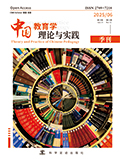

地域平衡是明代科举制度中的重要考量因素, 如宣德以后, 会试按南、中、北三卷分配名额录取士子。循此逻辑, 掌握选拔权力的会试官员同样可能受到地域出身影响, 或有类似限制。但考察发现, 宣德以后各科会试的知贡举官、考试官和同考官虽有亲属回避原则, 但并未受到地域限制, 地域分布与进士分卷配额并不一致。其原因是会试官员的选任已有限官、限资、限次等规则, 上述因素的优先度高于地域因素, 因而朝廷难以再兼顾地域平衡问题。这反映出明代科举制度的实际运行情况是综合考量的结果, 受到多重因素的影响。
Regional balance was an important consideration in the Ming dynasty’s imperial examination system. For instance, after the Xuande era, quotas for the metropolitan examinations (huishi) were allocated based on three regional divisions: southern, central, and northern. Following this logic, one might expect that the selection of officials overseeing the examinations—who wielded significant power in determining outcomes—would also be influenced by regional origins or subject to similar restrictions. However, this study finds that after the Xuande era, officials such as the chief examiner (zhigongju guan) , assistant examiner ( kaoshi guan) , and co-examiners (tongkao guan) were not restricted by regional background, though they were subject to the principle of kinship avoidance. Their regional distribution did not correspond to the regional quotas for jinshi candidates. This phenomenon can be attributed to pre-existing constraints in the appointment of examination officials, such as limits based on official rank, qualifications, and term limits. These factors were prioritized over regional balance. As a result, the court found it difficult to take regional balance into account, making it difficult for the court to implement additional geographical considerations. This study illustrates that the functioning of the Ming dynasty’s examination system was shaped by a multifaceted set of institutional factors, and regional balance was just one of many considerations in practice.